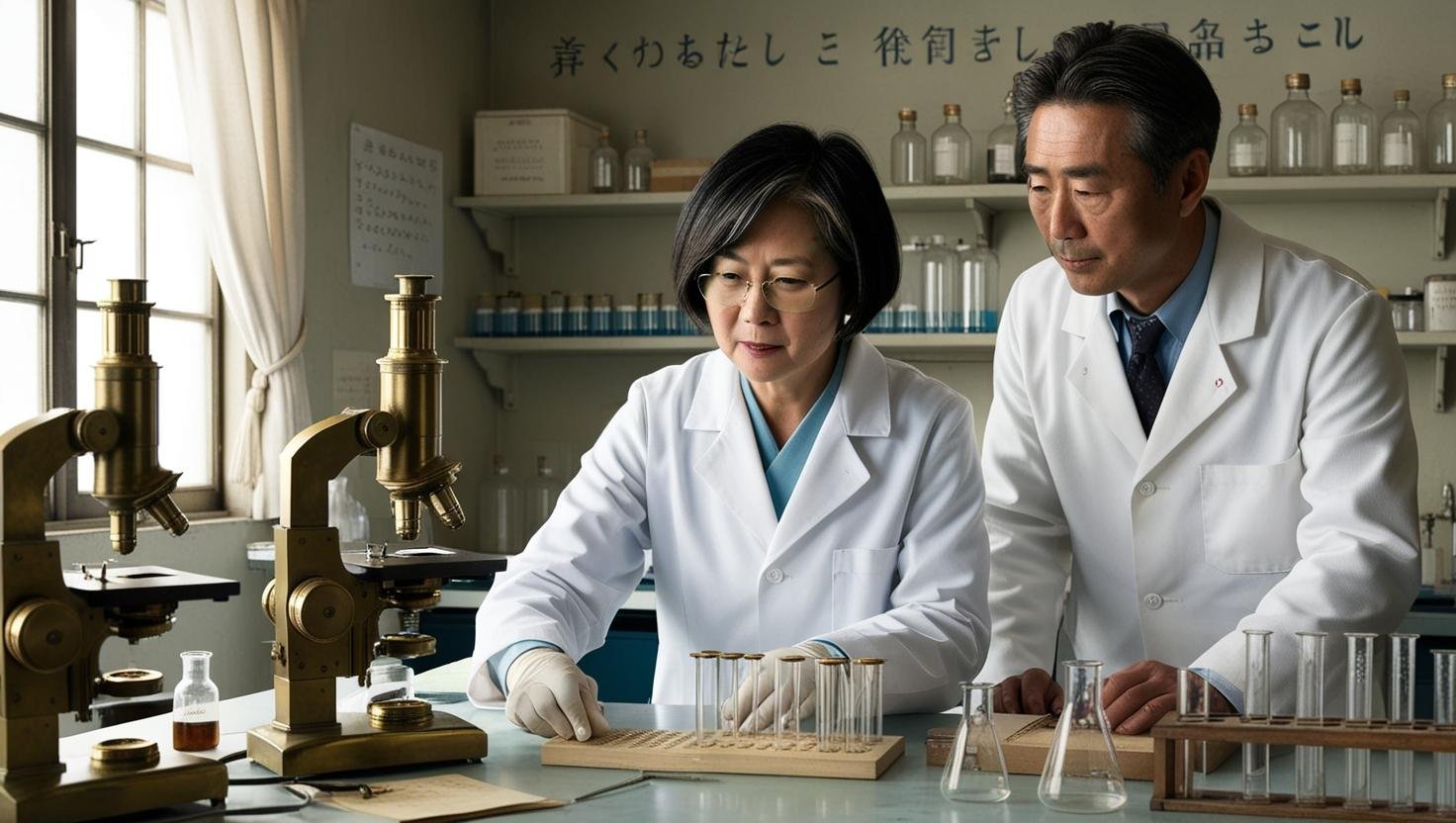If you’ve never heard of tranexamic acid, you’re not alone. Yet this humble compound is on the World Health Organisation’s list of essential medicines. It has become a frontline treatment to stop life-threatening bleeding, from car crash victims to mothers in childbirth.

When we think of heroes in science, we often picture famous names like Marie Curie, Albert Einstein, or Isaac Newton. But sometimes, the people who make the most significant difference in the world are the ones most people have never even heard of. One of those people is Utako Okamoto, a Japanese scientist who discovered a life-saving drug, but spent most of her life unrecognised, working quietly in the background of a male-dominated world.
A Quiet Revolution in the Lab

The story begins in post-war Japan. The country was still recovering from devastation, and scientific research was hampered by a lack of funding, equipment, and even basic materials. But for Utako Okamoto and her husband Shosuke, there was no time to wait. Maternal deaths from post-partum bleeding were far too common, and they were determined to find a solution.
With limited resources, they turned to the study of blood clotting—an area that required little more than microscopes, test tubes, and sometimes, their blood. They first explored epsilon-aminocaproic acid (EACA) but found it to be not potent enough. So they dug deeper, eventually synthesising a compound called 1-(aminomethyl)-cyclohexane-4-carboxylic acid—now known globally as tranexamic acid.
Their 1962 paper in the Keio Journal of Medicine revealed that this new compound was 27 times more potent than EACA in preventing fibrinolysis, the breakdown of blood clots. It should have been a landmark moment. However, the medical world barely took notice.
Overlooked, Because She Was a Woman
Why did such a life-saving discovery go unnoticed for so long? One primary reason: Utako was a woman in a field that didn’t welcome women.
Despite her qualifications, dedication, and intelligence, Utako Okamoto faced a wall of sexism and exclusion. At one scientific conference, she was asked to leave because it was “not for women and children.” Her male peers often dismissed her work or overlooked it entirely. She once reflected, “Men are always aware of the fundamental differences between men and women, and so cannot help but think of themselves as superior. So I used that to my advantage—by stroking their egos.”
Even motherhood became a battlefield. With no childcare options, she brought her daughter into the lab, hoping the child would remain quiet while she worked. To be seen as equal, she worked longer hours than her male colleagues, often 10 hours a day.
Yet through it all, she didn’t stop. She didn’t give in. She kept working.
Recognition—Too Late, But Not Lost
It wasn’t until 2010—nearly 50 years after her discovery—that the world finally caught up. A massive global study known as CRASH-2, led by Professor Ian Roberts in the UK, proved that tranexamic acid significantly reduced death from traumatic bleeding if given within hours. The drug became a cornerstone in emergency medicine.

Roberts, moved by the results, travelled to Japan to meet the woman behind the science. He found Utako Okamoto in her 90s, still reading medical journals, still engaging with researchers, still quietly brilliant.
“She was a fascinating character,” he said. “Lively and vigorous.”
Sadly, Utako passed away in 2016, just before the results of another major study—the WOMAN Trial—confirmed what she had hoped all along: tranexamic acid could also save mothers’ lives in cases of post-partum haemorrhage.
Why Her Story Matters
Utako Okamoto never received the honours she deserved. She didn’t become famous, didn’t win international awards, and was rarely quoted in textbooks. But her work continues to save lives every day.
Her story is more than a tale of scientific discovery—it’s a lesson in resilience, in pushing forward when the world tells you to stop. She is a symbol of what happens when women are underestimated, and of what we all stand to gain when we finally listen.
In a lab full of dusty equipment and fading labels, Utako Okamoto lit a spark that still burns today—in ambulances, in hospitals, and in every life that tranexamic acid has helped to save.









